Lords Of The Fallen (2023) review: A unique Souls-like carving its own path
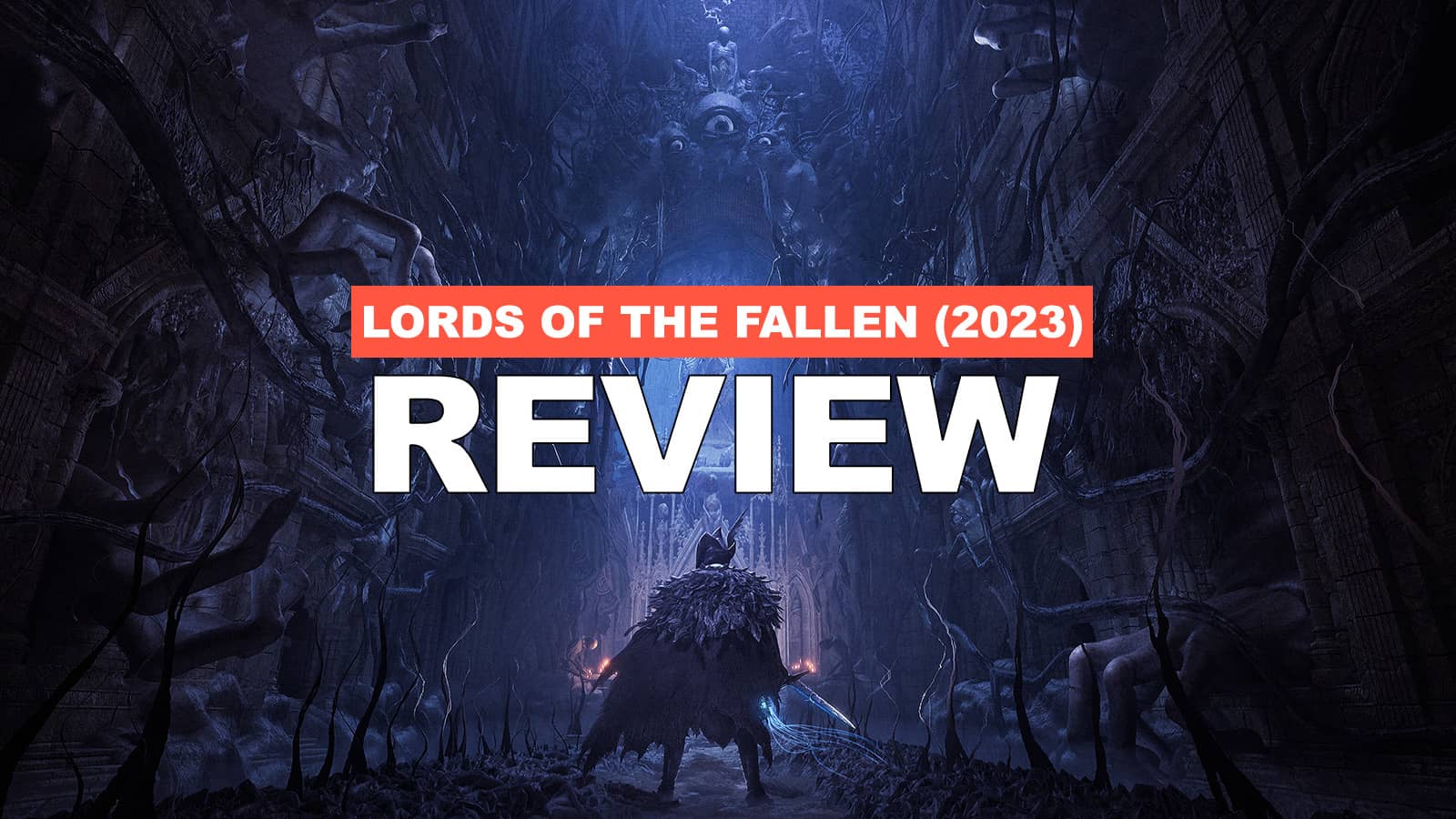
A lot of Souls-like games have come and gone over the last few years, each trying to emulate FromSoftware’s commercial, thematic, and gamified success. HEXWORKS and CI Games’ Lords Of The Fallen – a reboot and spiritual successor to CI Games’ 2014 title of the same name – is the latest to take a try at a Souls-like, and, despite several frustrations, it’s arguably one of the better ones.
Set in the fictional land of Mournstead, 2023’s Lords Of The Fallen follows your customisable player character as they embark on a journey across the land to prevent demon god Adyr’s resurrection by cleansing five beacons. Along the way, you’ll fight enemies of various factions, defeat challenging bosses, make friends with NPCs, and uncover encyclopaedias of lore via the game’s numerous factions, locales, and item descriptions.
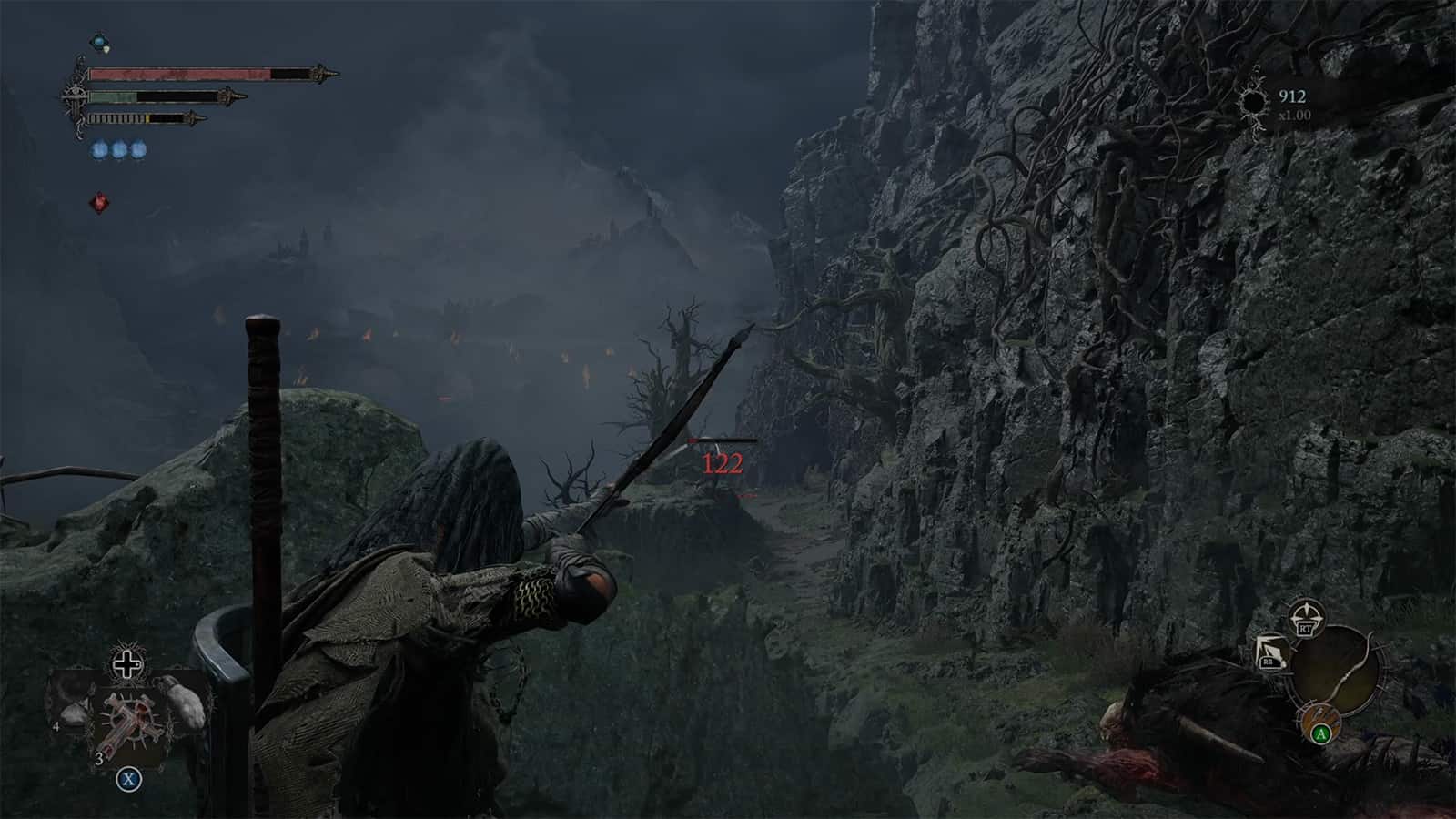
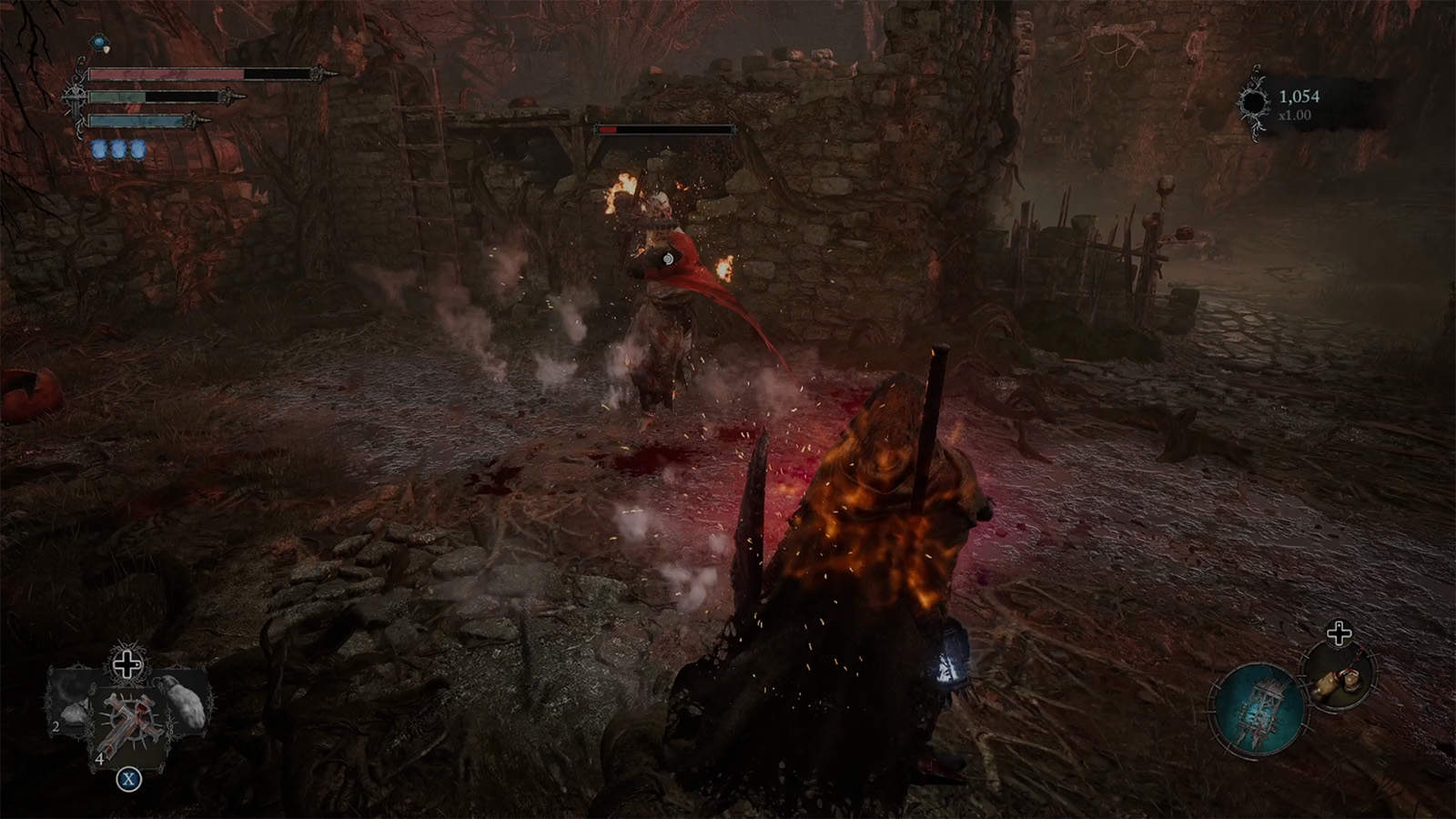
On my journey to cleanse the beacons, I was whisked to various lush, swampy, volcanic, and frozen biomes where I had to fight for survival and switch between the game’s two worlds; Axiom, the land of the living, and Umbral, the land of the dead. While Lords Of The Fallen generally follows the Souls-like template to a T with its use of big boss battles, levelling of stats to increase health and damage output, NPC quest lines, and numerous upgradeable melee and magical weapons, it also works very hard to differentiate itself from the games that inspired it through the use of the dual world mechanic.
Exploring The Land Of The Dead And Living
One of the core mechanics in Lords Of The Fallen, and where the game shined the most for me, was its parallel world gameplay, where you need to swap between Axiom and Umbral to progress. The game frequently presented me with puzzles to solve by either using the Umbral Lamp (It allows you to look into and interact with the parallel world) or by sacrificing one of my two lives to transport myself to Umbral – dying at any point sends you to Umbral for a second chance. For example, in several areas, I could pass through locked gates or doors in Axiom by shining the game’s lamp at them where the blockage didn’t exist, while other areas required me to transport myself to Umbral to cross lakes of water where I’d otherwise drown, cross large gaps on the limbs of gigantic skeletons, and pull and push skeletal structures for some puzzle platforming.
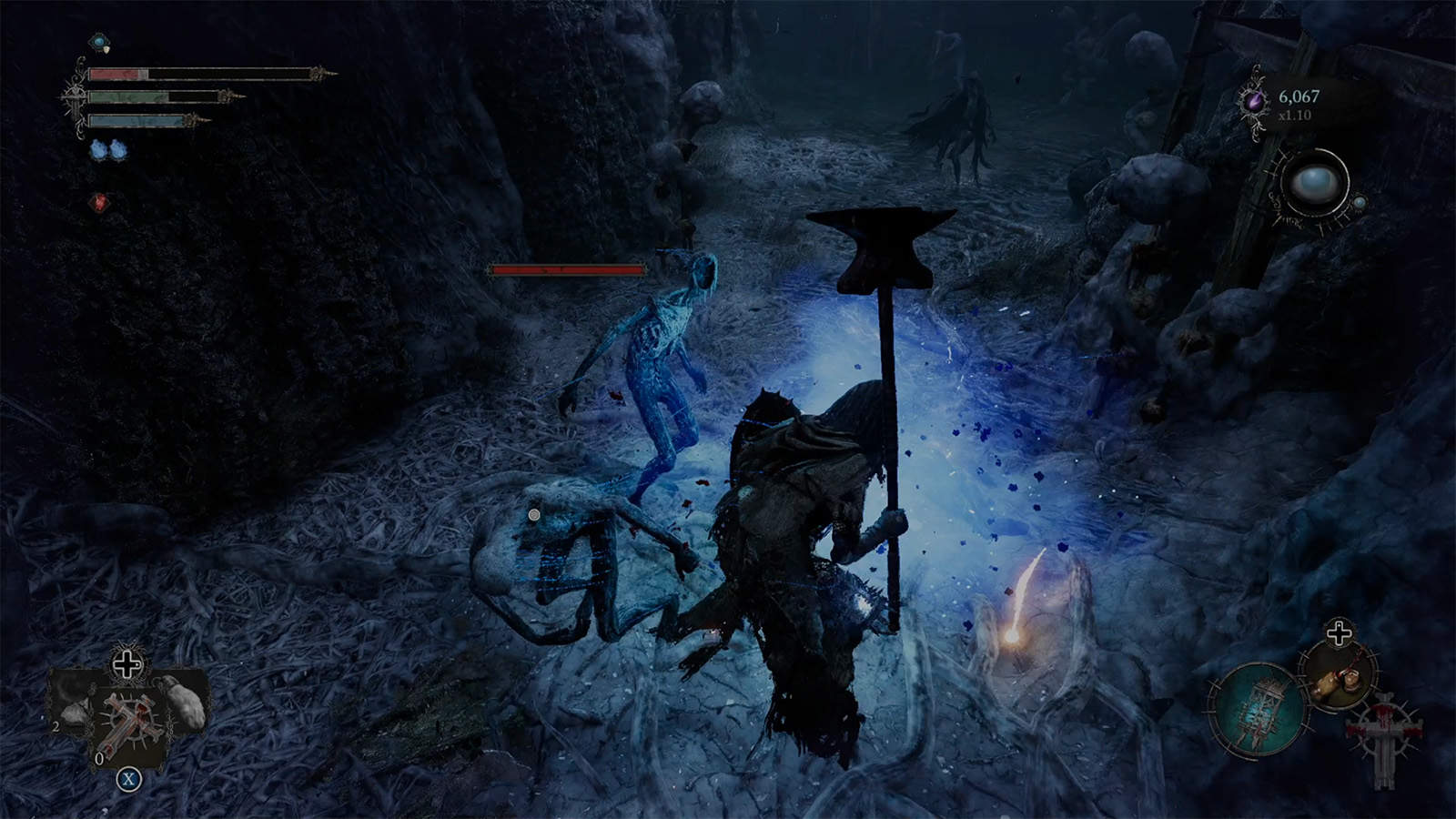
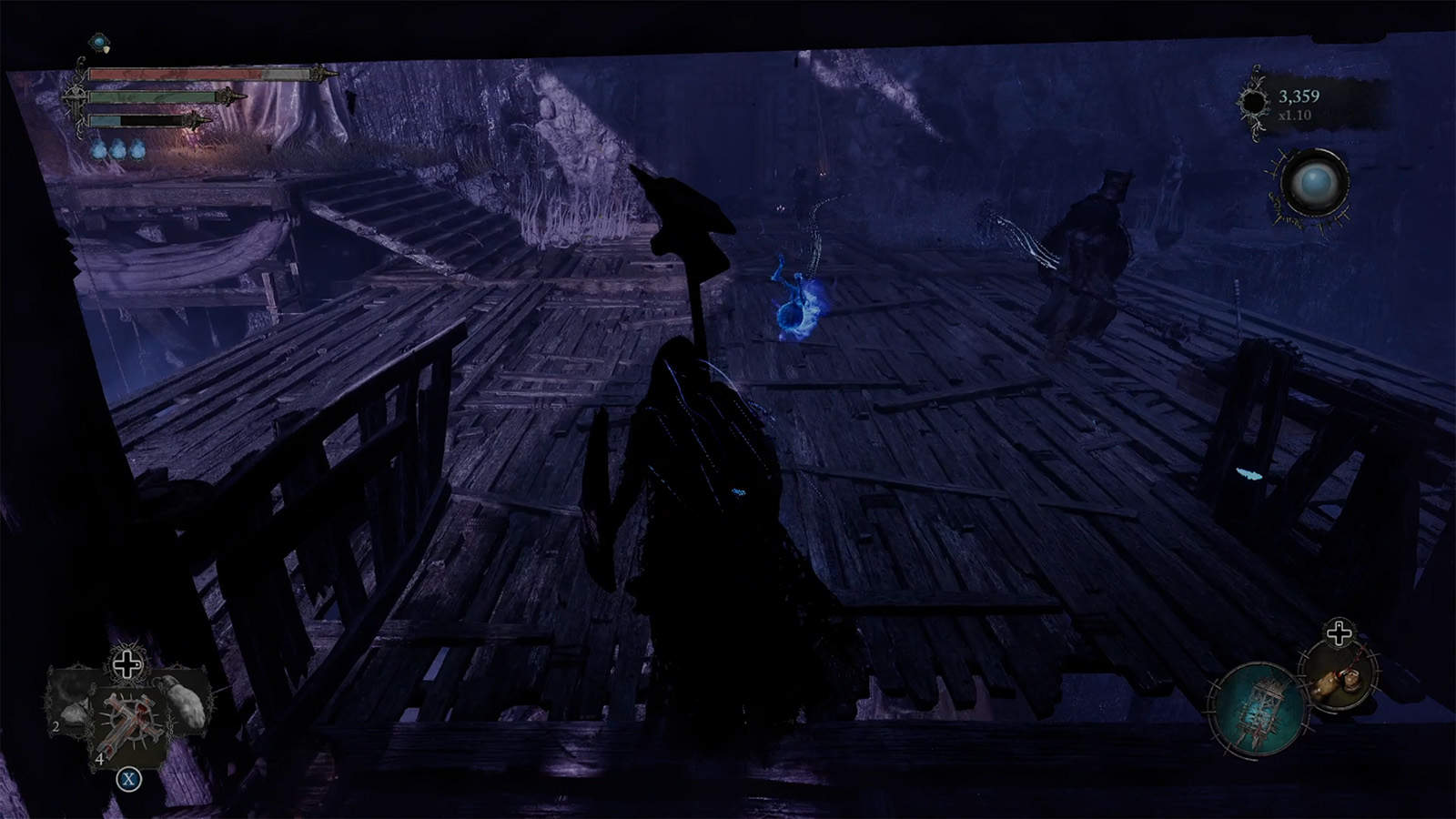
The Umbral realm was ghostly, to put it lightly. While a majority of the world remained the same, entering Umbral very quickly turned the sky dark, introduced what I can only describe as a shrill white noise that made me feel increasingly uneasy, and spawned the skeletons of giants that stretched out over the hopeless land of Mournstead. Entering Umbral was always exciting, but it was also always frightening. Accompanying the change of environment, Umbral also introduced new Umbral-based enemies as remnants of the dead: faceless zombie-like goons, winged creatures that spawned eggs with erupting enemies, nimble gargoyle beasts that jumped and flew, and dangerous, Katana-wielding phantoms.
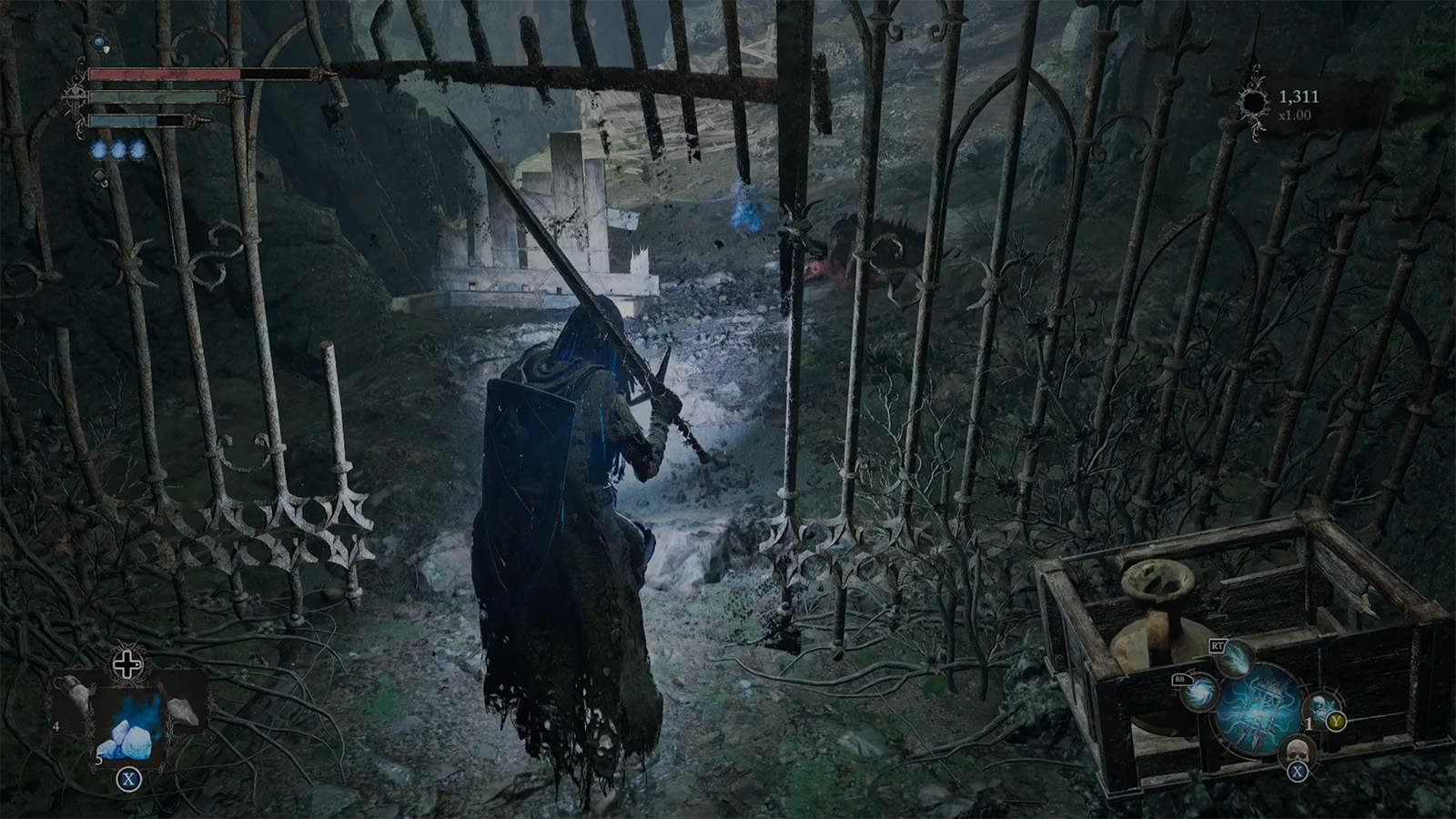
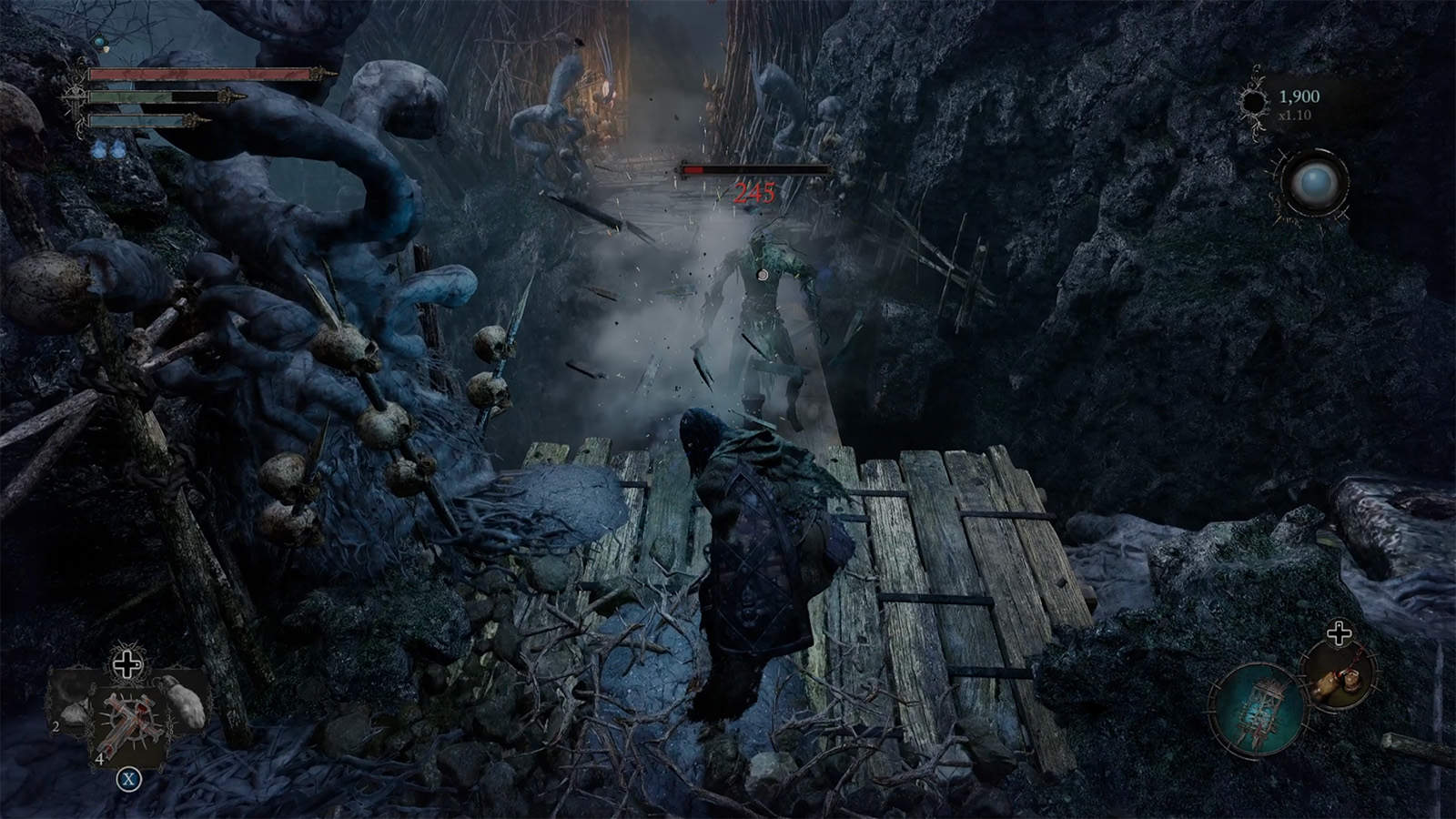
There’s a caveat to exploring Umbral, as the longer you stay there, the more its inhabitants become aware of you as indicated by an on-screen blue eyeball timer (You can see it in the above right-hand image). Slowly, you become bombarded by more and more enemies, culminating in a battle against the fast and deadly Crimson Reaper phantoms who always murdered me. These time restrictions and the raid of enemies – both those from Umbral and those of Axiom together – always left me on edge, and although I found the use of parallel worlds daunting at the start of the game, I quickly figured out when the game wanted me to swap between the two to progress.
Time For Rest
Outside of Umbral, it’s mostly business as usual as you explore, fight off enemies, and unlock shortcuts back to Vestiges (Lords Of The Fallen’s equivalent to bonfires. Check the left-hand image below). Each area had its own Vestige at the start, but you don’t find any additional Vestiges until you reach a new area. Unlike other Souls-likes, Lords Of The Fallen provides you with the ability to create your own temporary Vestiges (The right-hand image below) at Umbral Flowerbeds with the use of Vestige Seeds, which you acquire by defeating enemies and bosses or by purchasing them at the game’s hub Skyrest Bridge. The idea is great on paper, but it suffered from a few issues at launch.
The seeds themselves were rare drops and were pricey at release, and I frequently found that the Flowerbeds were too close together and sometimes too far apart, which meant I misused them a lot and then ran out of seeds when I really needed them. HEXWORKS has since lowered the price while keeping them as relatively rare drops from enemies, making it a little easier to get by. When it worked, the mechanic was great, and I loved being able to create my own Vestiges when possible, I just wish seeds were either more widely available or for there to be fewer Flowerbeds so I wouldn’t misuse them.
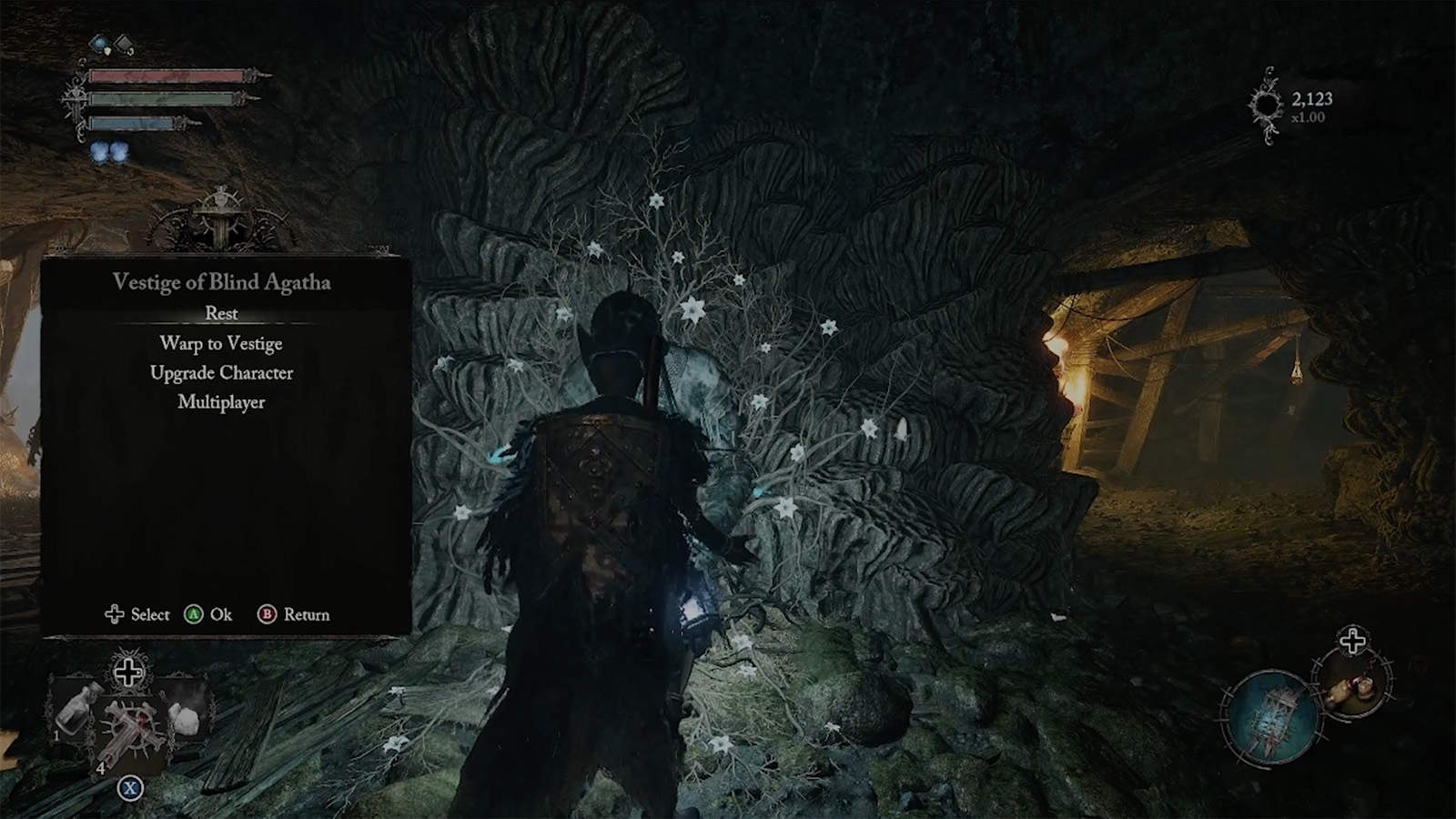
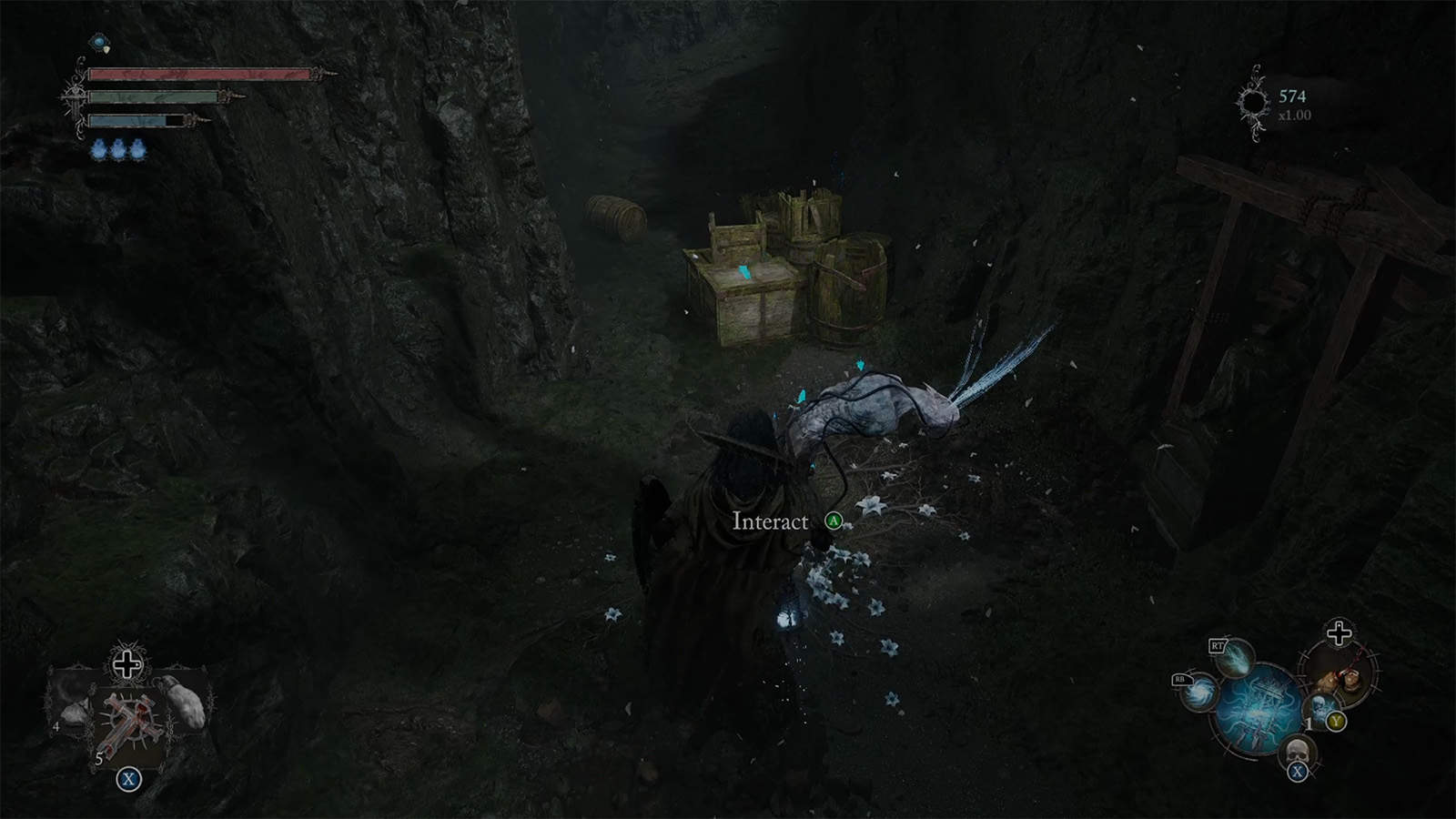
Thankfully, the game’s world design more than made up for that. HEXWORKS has created one of the best interconnected worlds I’ve seen in a Souls-like title, beating out the world of Lordran in the original Dark Souls. Unlocking shortcuts to previous Vestiges as I scraped by with my last sliver of health was a humbling experience, and the ability to explore Mournstead’s locales – dilapidated villages, frozen mountaintops, volcanic castles, and swaps – and see how they connect with each other as well as the Skyrest Bridge hub world was exhilarating and rewarding. The game’s gorgeous visuals elevated all of these areas, although very frequently at the expense of framerate and lag, which occasionally made fights difficult.
The only issue I had with the game’s exploration was with the way the game threw hordes of enemies at me, which got in the way of my enjoyment in checking the nooks and crannies of Mournstead for important items. In most areas, I came face-to-face with groups of spongey melee fighters as well as long-range enemies that could easily target and hit me, but themselves were untargetable. Much of this has been improved since I started playing, but I still have issues with the crowds of enemies I’m forced to fight against.
The game’s combat feels like it wasn’t designed to fight multiple enemies at the same time, but I was constantly forced to. In the end, I resulted to running through areas, avoiding enemies, and picking up what items I could until I reached the next Vestige, to then rest and backtrack to grab what I missed. Having a quick browse through social media platforms, I know I wasn’t alone in doing this. There were too many enemies, too frequently close together, and this was usually always made worse when I accidentally or purposefully transported myself to Umbral, where I had to then juggle the Axiom enemies in addition to the endless spawning of Umbral entities.
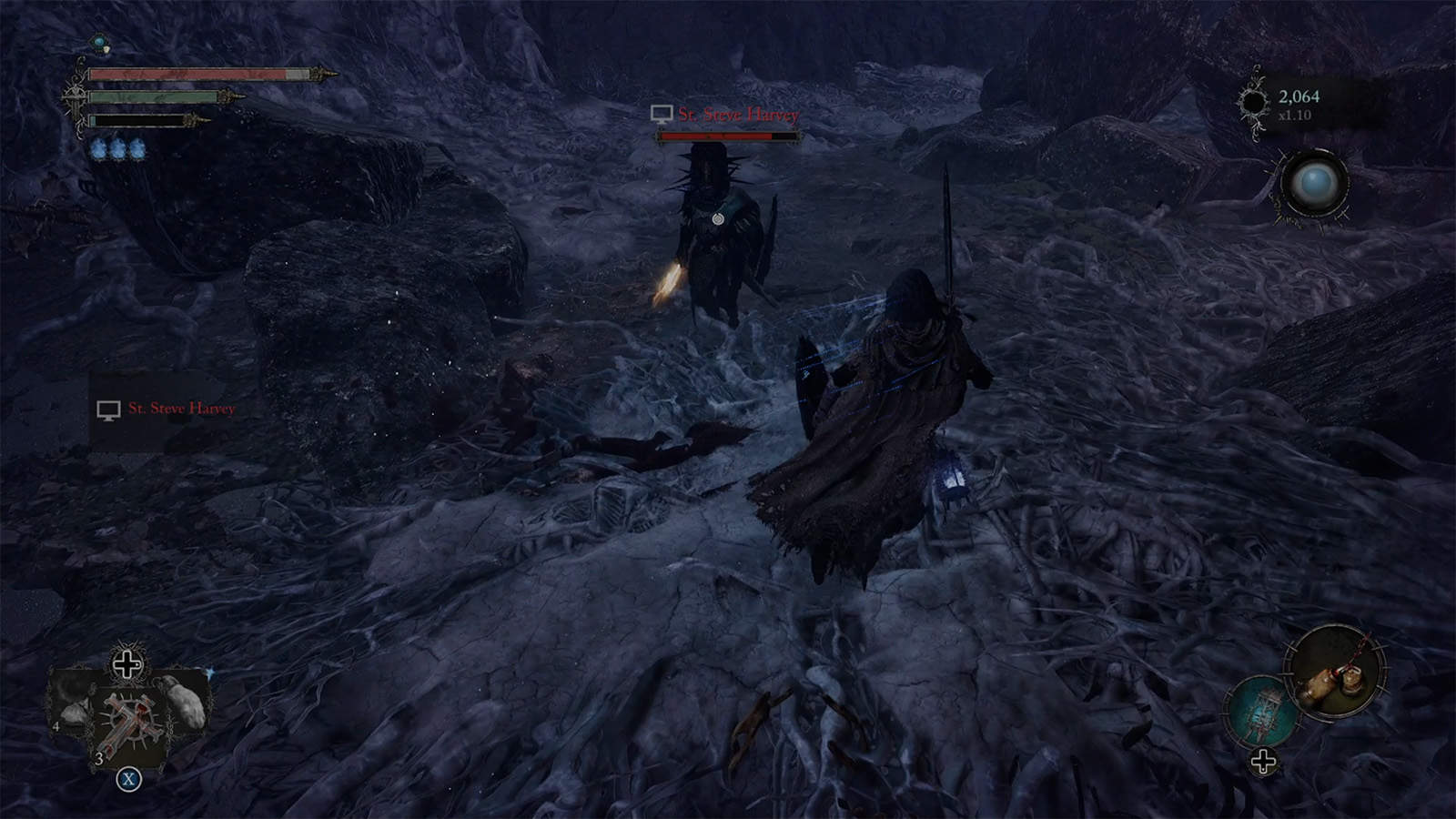
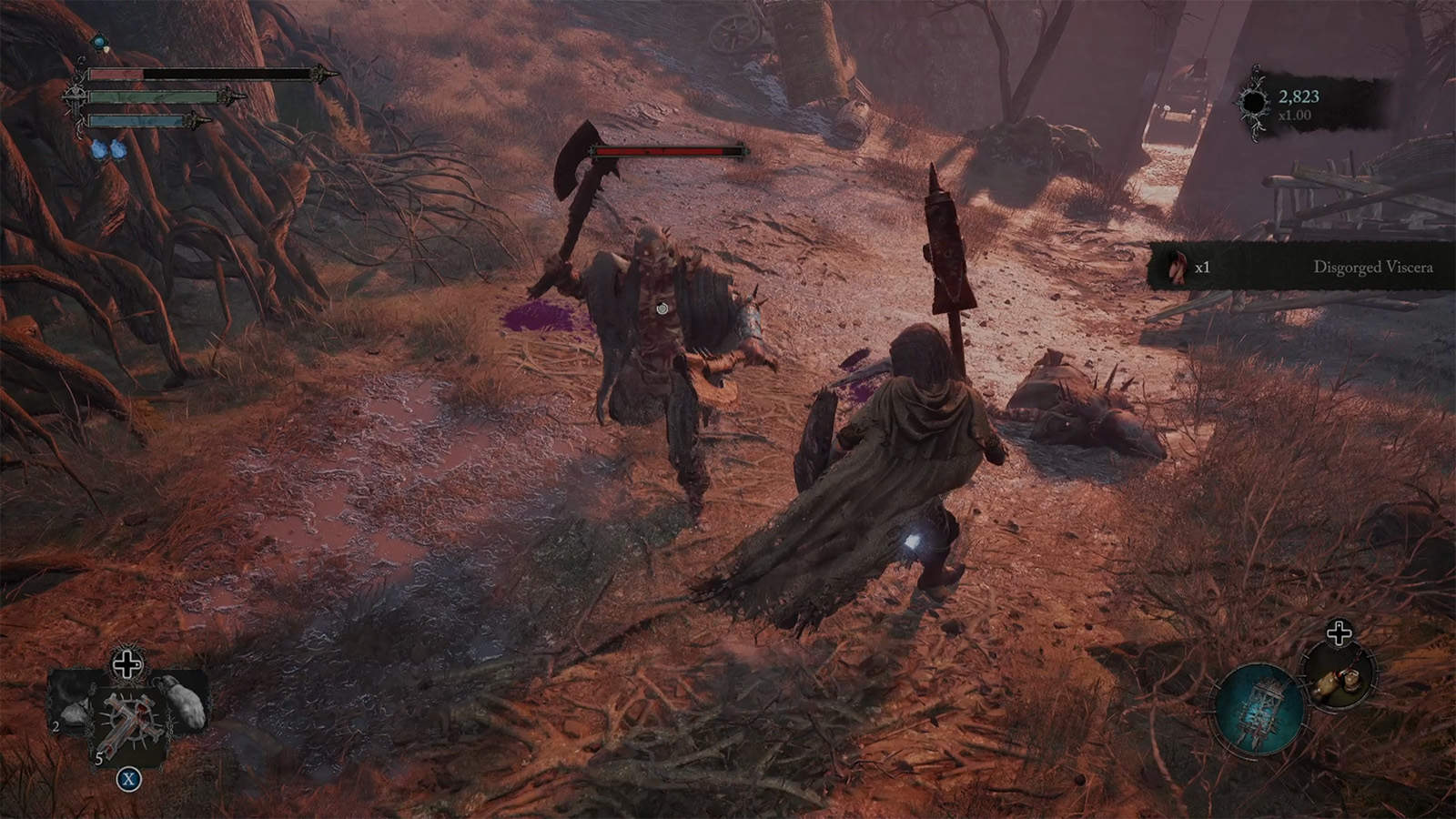
The above led to several untimely deaths, and only cemented my solution of running through areas to unlock Vestiges before backtracking. One other solution that helped was summoning another player to help. Lords Of The Fallen, much like other Souls games, allows you to enable multiplayer and summon players to your game anywhere and at any point. Alongside co-op, the game comes with invasions, where you can invade others’ worlds or become invaded by players. All of this is to be expected with Souls-like games, although the ability to beckon other players anywhere rather than at selected points was a wonderful evolution to the system, even with the buggy matchmaking and long wait times for summons when I tried. Playing with someone else while exploring made the game much fairer when having to fight an onslaught of enemies, and it trivialised many bosses, which is a great option for anyone new to the genre.
What’s Up, Boss?
Challenging bosses are one of the many foundational layers to Souls-like games, and players, regardless of whether they’ve played a game of the genre before, have expectations to uphold: bosses need to be challenging and they need to be rewarding. Lords Of The Fallen is a little hit-and-miss in that regard. The game comes with more than 30 boss fights, some of which were challenging (Prepare to die a lot to the game’s first proper boss, Pieta) and others which were much easier. All of the bosses come with varying movesets and weaknesses as expected, and required me to memorise attack patterns to defeat them.
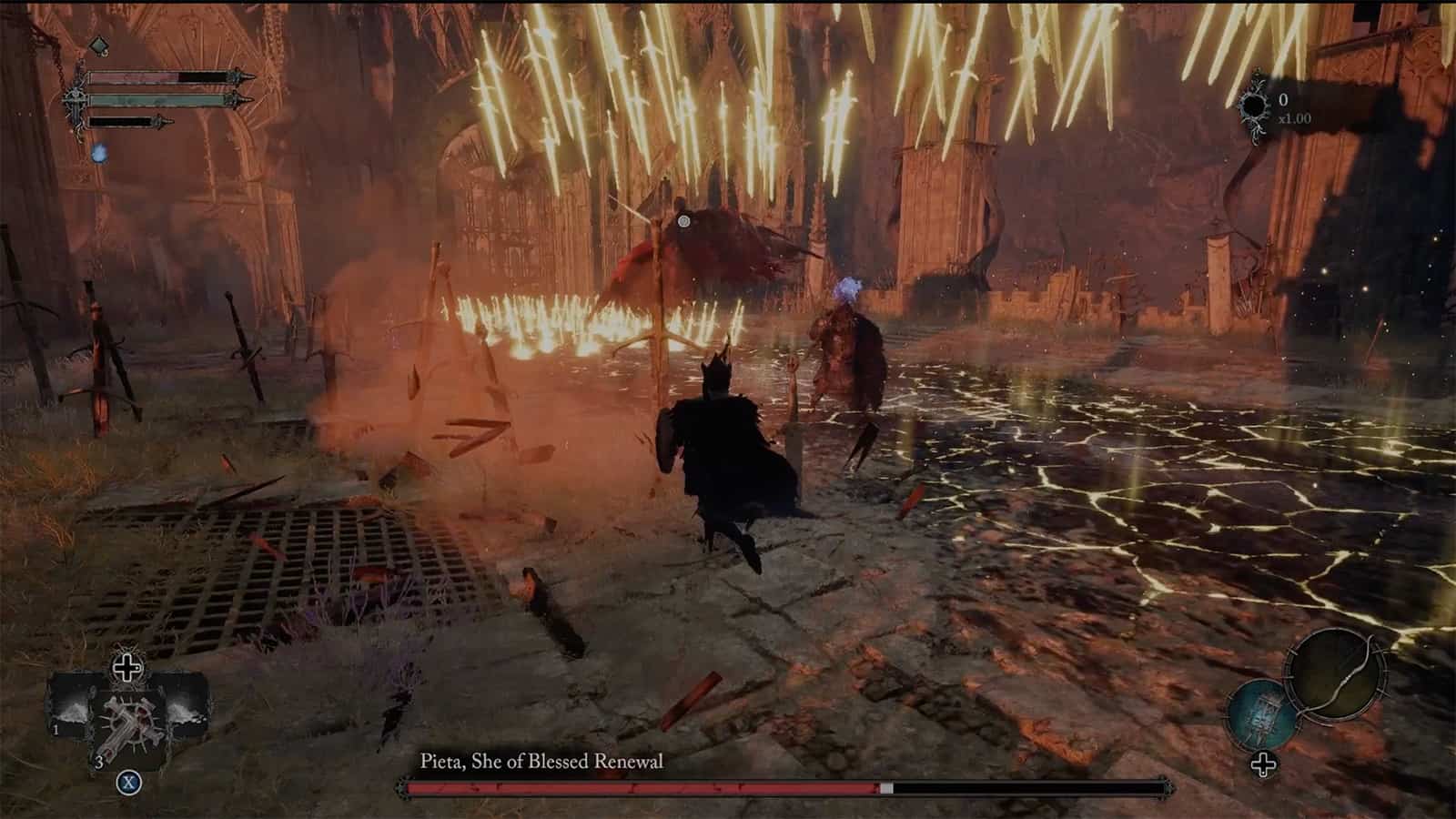
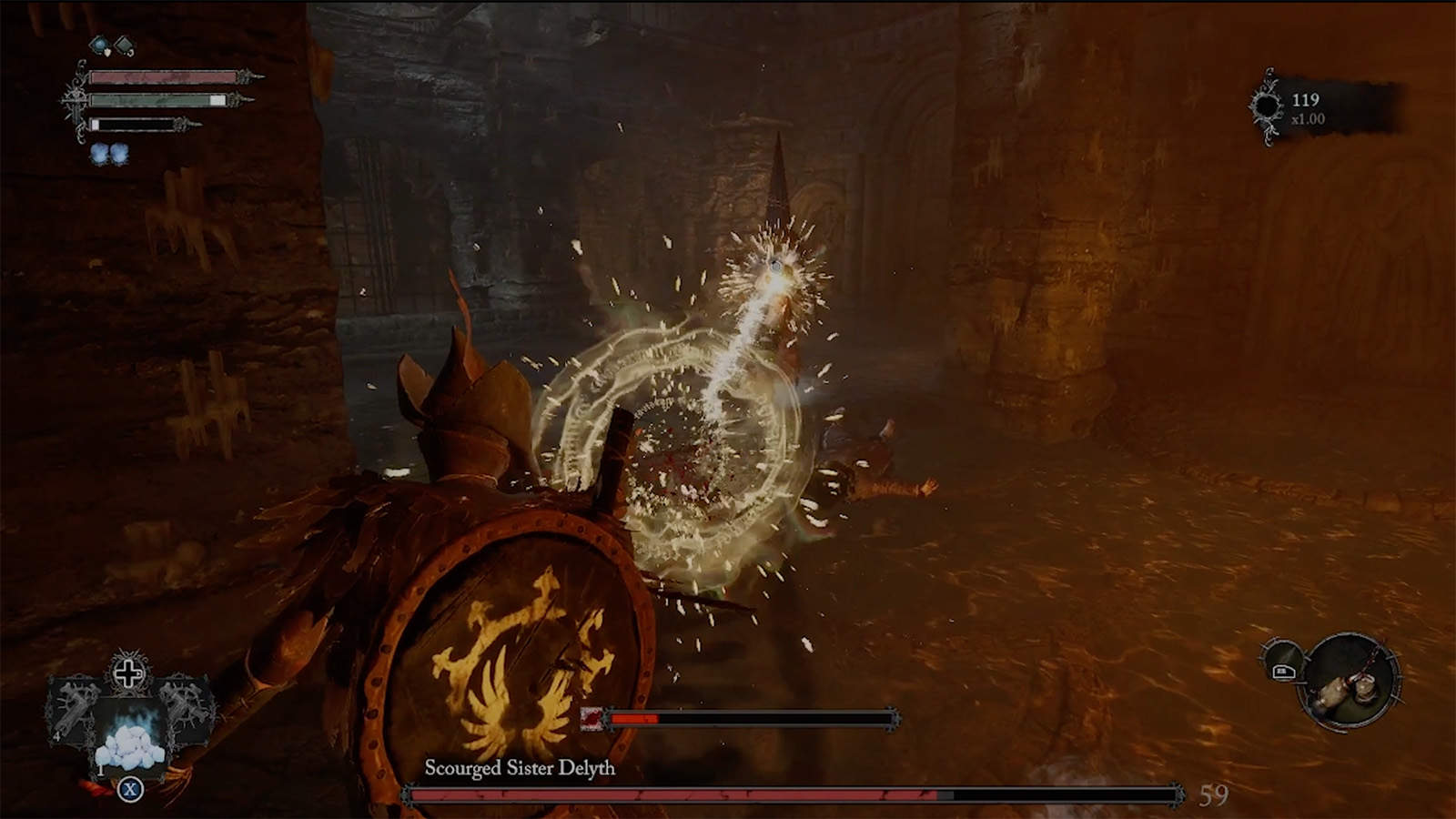
While I enjoyed the majority of them, I was a little disappointed to find that some bosses, particularly those in the late-game, became regular enemies immediately after defeating them, removing their special status as bosses and making them a little forgettable as now basic fodder to plough through. Thankfully, there were several battles that left me on the edge of my seat: Pieta, as mentioned was a standout, along with the Lightreaper whom you’ll encounter multiple times, and the challenging Hushed Saint who parades around his arena on horseback before launching off it to fight you face-to-face.
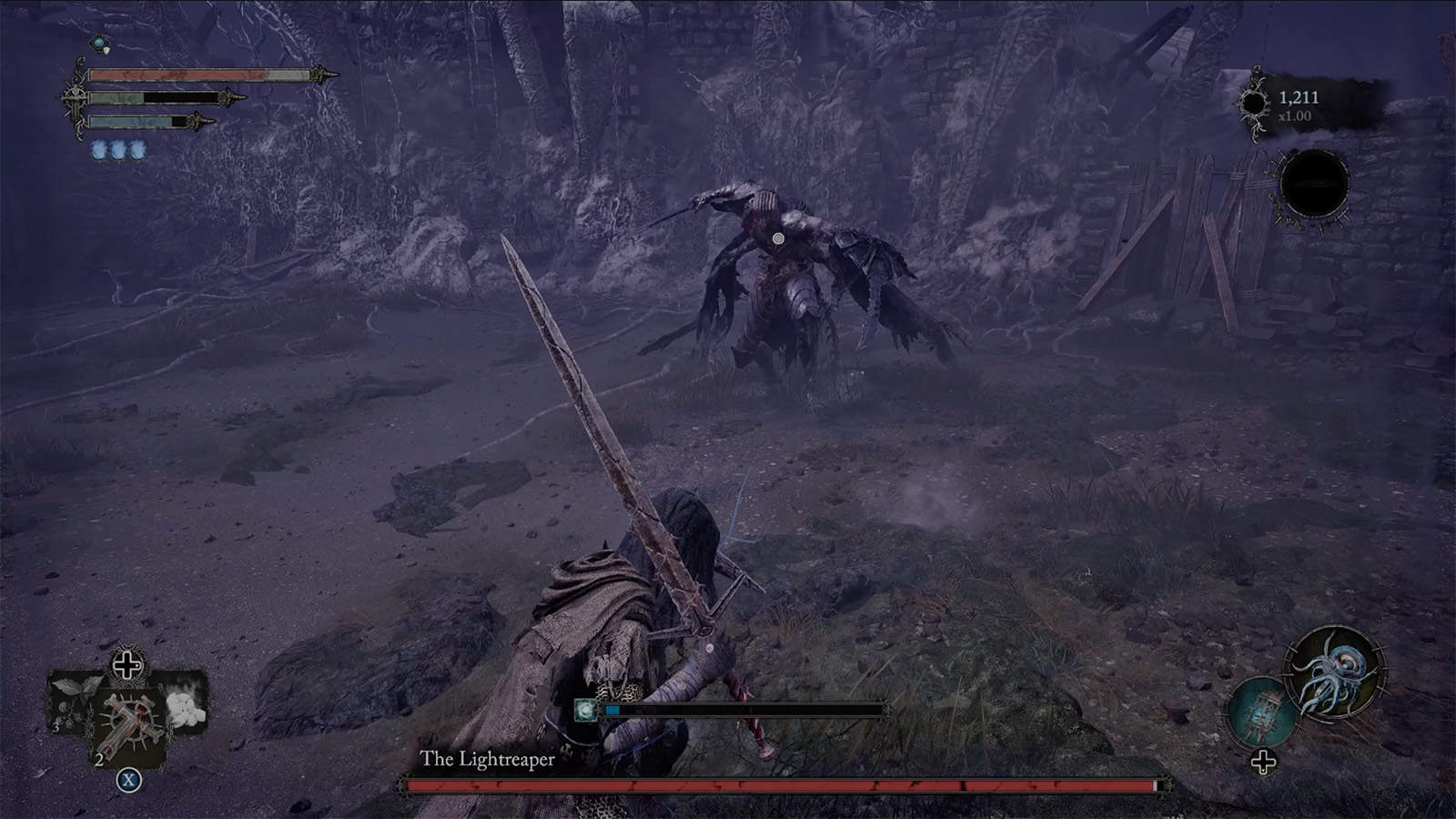
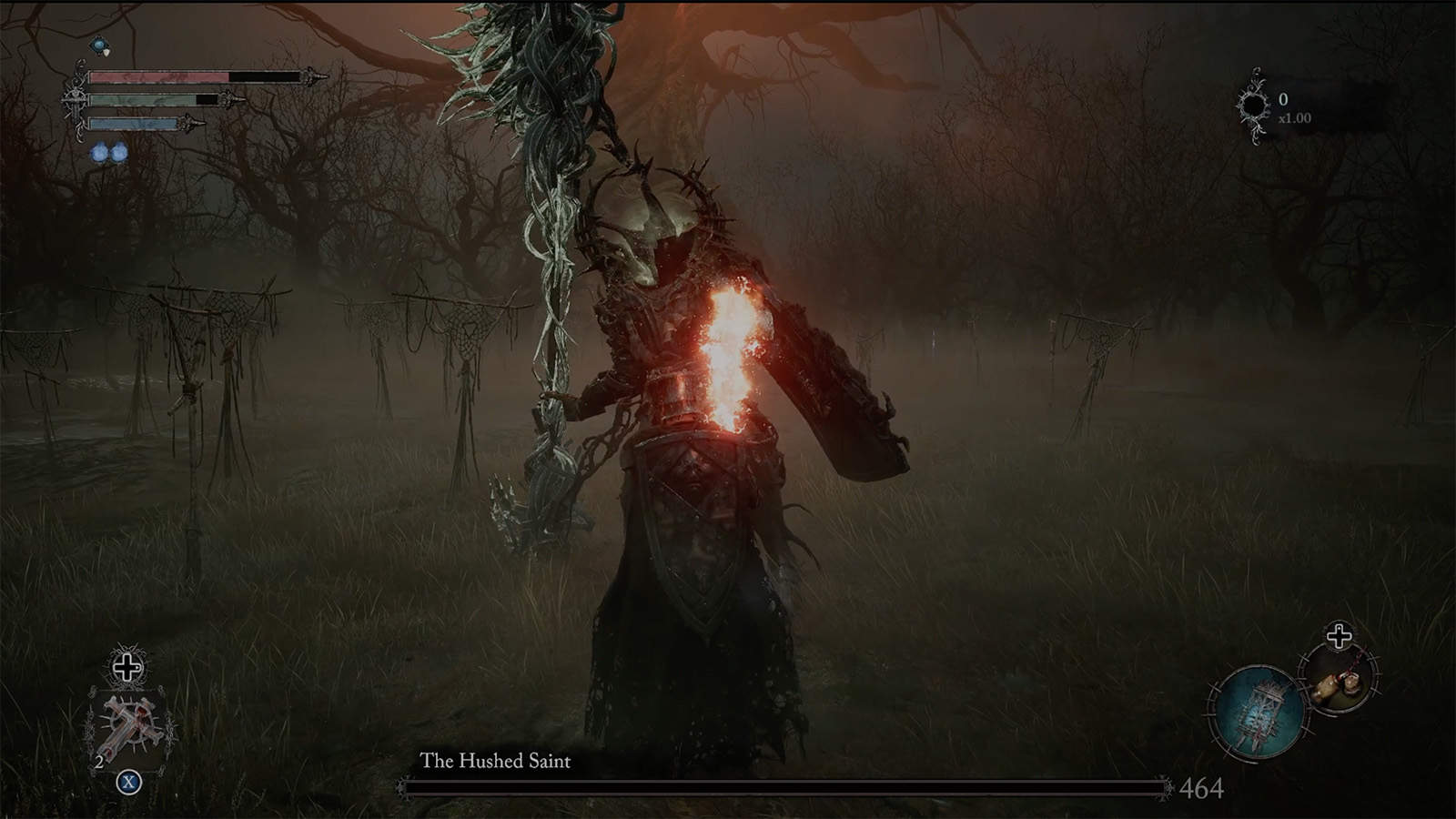
In other cases, I wasn’t keen on the way some boss fights required you to face multiple enemies. One of the battles in the game’s frozen biome of Fief required you to fight the main, freeze-attack dealing boss in a flooded arena (This meant you couldn’t move as fast as you normally would) with two dogs, all of whom are protected by Umbral parasites (Entities that shield enemies and bosses and prevent actual damage being dealt). Switching to Umbral removes the flood water and makes it easier to fight the enemies and kill the parasite, but you’re then forced to also fight a Mendacious Visage, a boss from a previous area who is converted into an ordinary enemy.
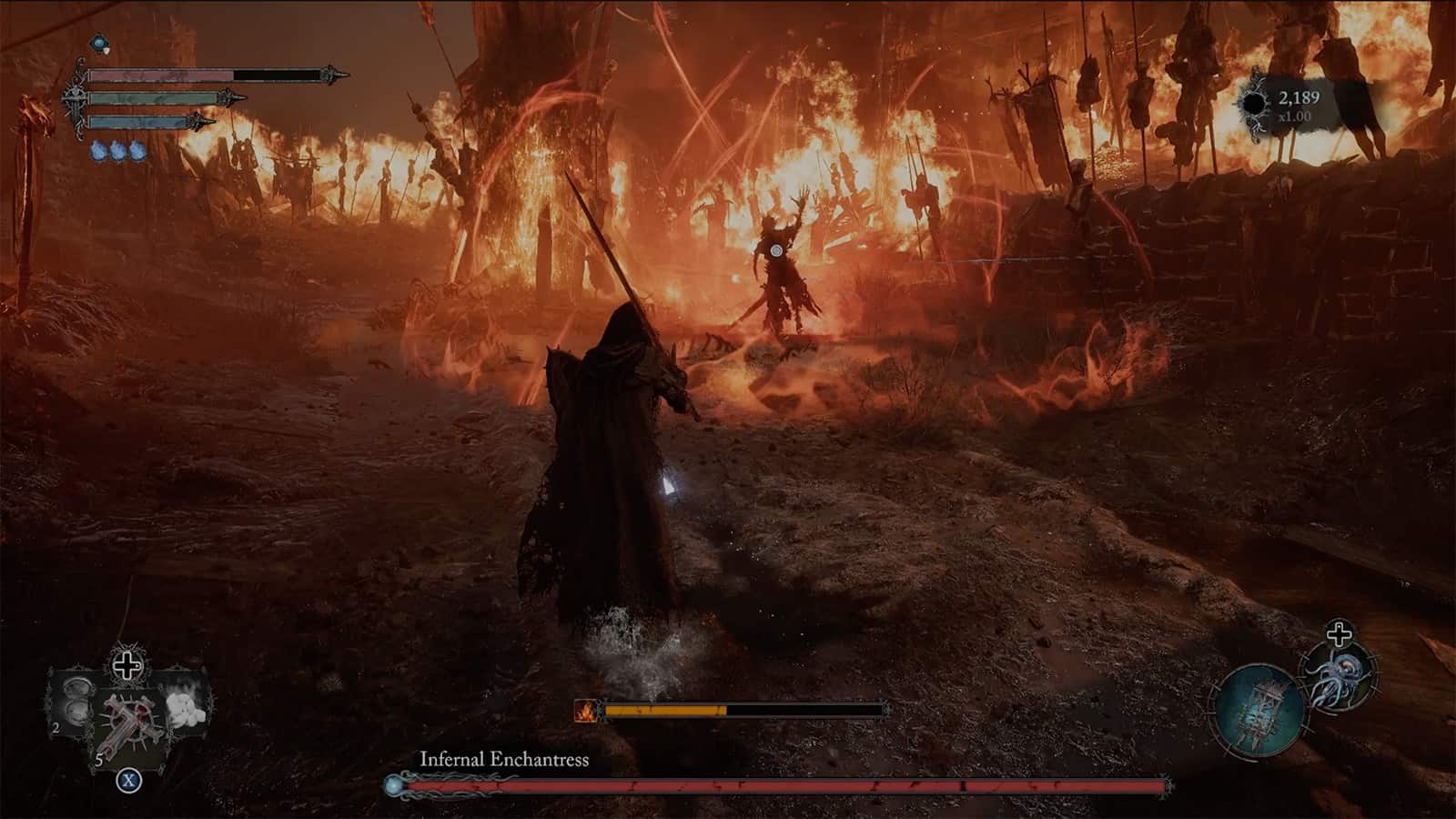
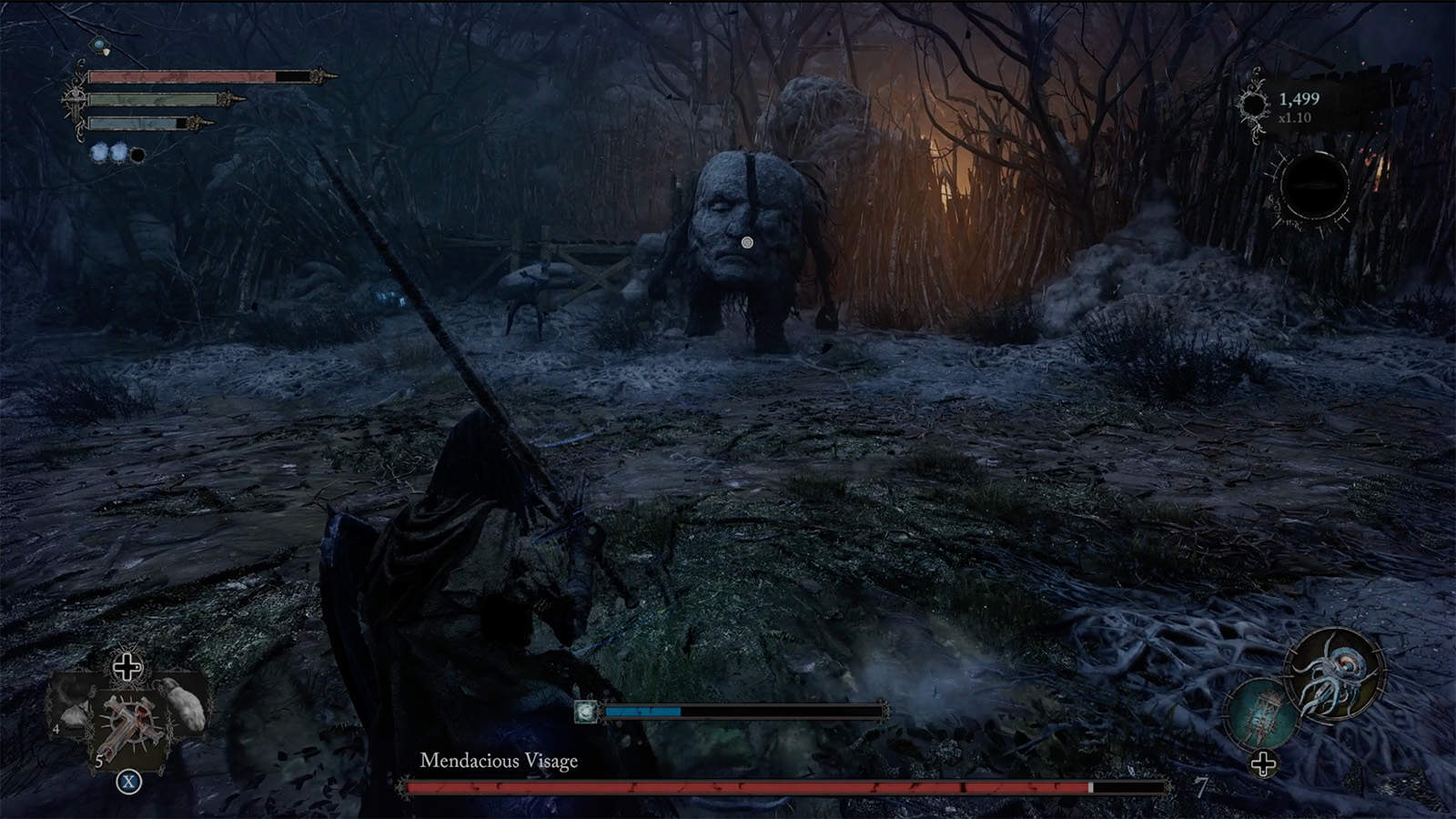
All of this is a lot to manage and the difficulty feels artificial. Give me the flooded arena with the parasite-protected boss, or the boss with the dogs, but please do not add multiple enemies with an environmental challenge, with a hidden enemy when trying to make the fight a little more balanced in Umbral. There are a few encounters like this in the game, but most bosses are easily managed and can be defeated within a few tries.
Complicated Quests And NPCs
One of my biggest frustrations regarding the game was the way it handled NPCs. The NPCs in Lords Of The Fallen have complicated quest lines that progress as you move through the game, but the quest lines were a little too vague for me. NPCs never clued you in on where they’d be, making them missable, and many also progressed in an unclear fashion. After defeating a boss just after the game’s halfway point and using the key it dropped to take a lift to the next Vestige, I unknowingly killed an NPC and lost a merchant by progressing another NPC’s quest line.
While this didn’t happen a lot, I found that I missed or lost on many NPCs in the game due to my natural progression, and it disappointed me as interacting with these characters and learning of the lore they offer are some of the aspects I enjoy most in games like this. Missing these NPCs does leave something new for subsequent playthroughs, but I can’t help but feel I’ll need to play with a guide to ensure I don’t mistakenly kill someone by simply playing. Yes, other Souls games have elements of this, but I feel it’s never been this convoluted.
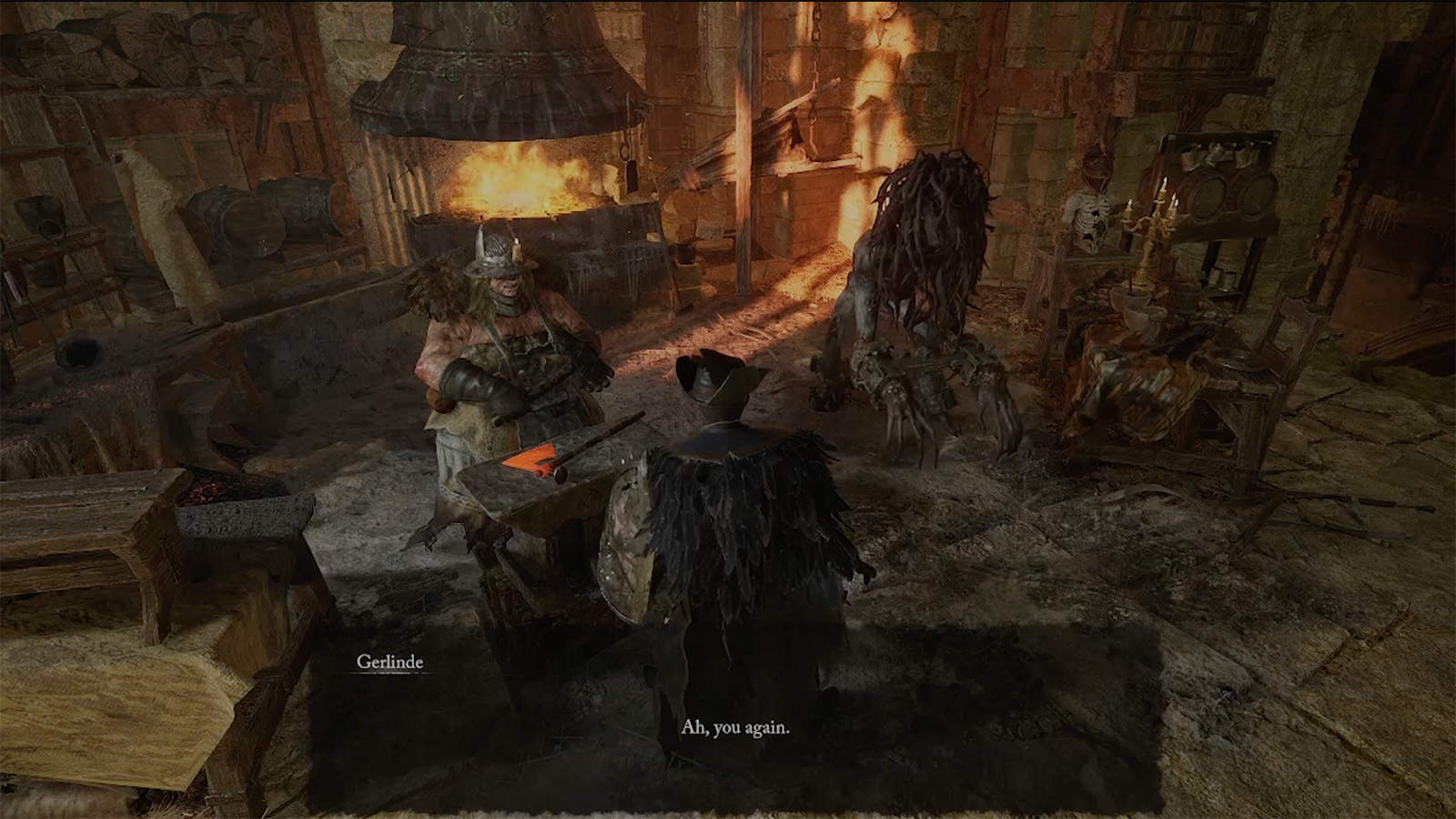
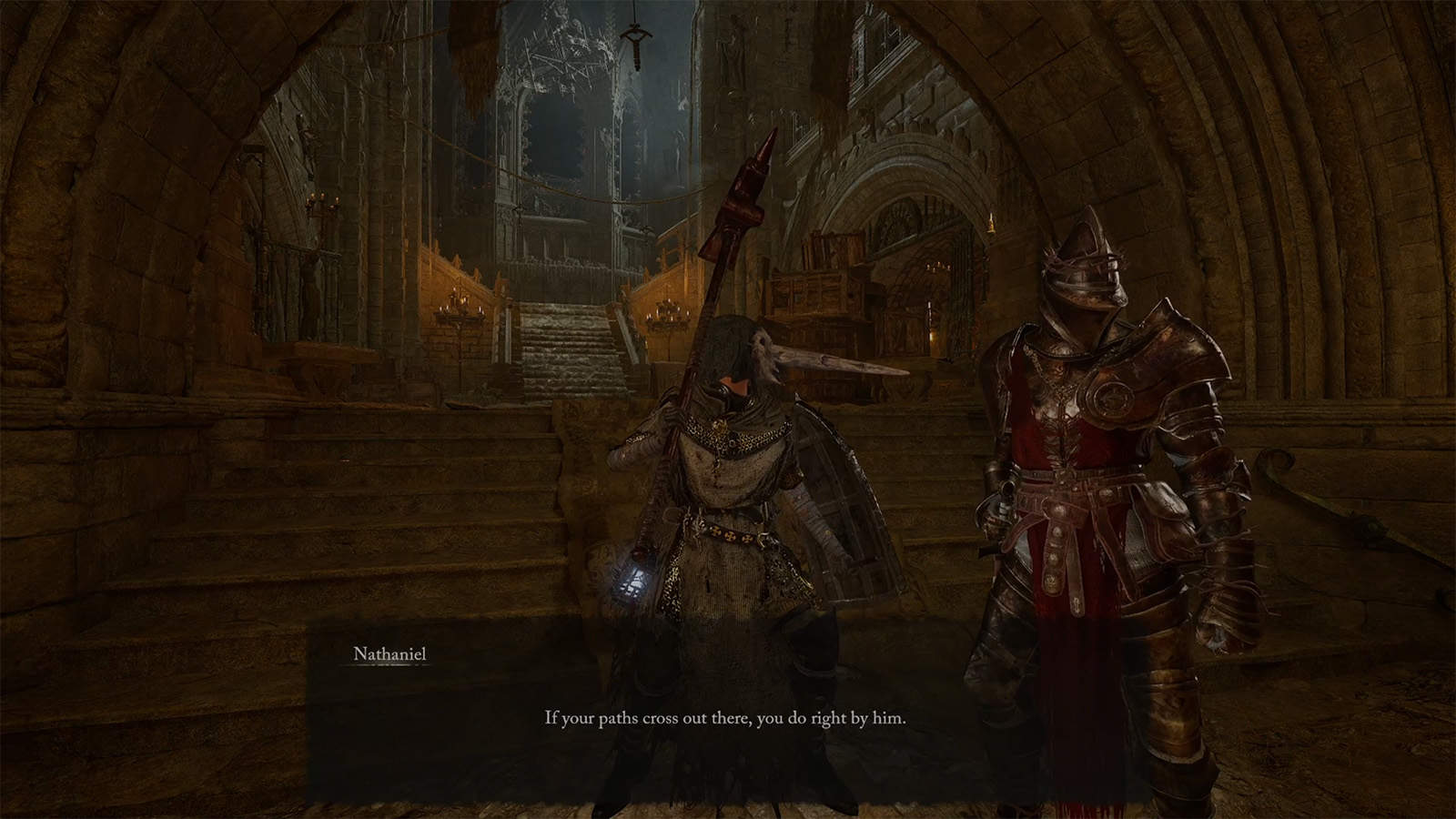
Progression itself, particularly in regards to weapon upgrades, felt a little uneven at times in the game. You can unlock Gerlinde the blacksmith fairly early on, allowing you to upgrade weapons in exchange for Vigor and different upgrade materials. While some were acquired easily enough, others weren’t. Wanting to try multiple weapons for my magic, Radiance-based build, I levelled up several weapons around the mid-game, and used most of my upgrade materials without the ability to purchase more or farm them, since drop rates for the resources seemed so low.
This left me with an underpowered weapon for a large chunk of the game, which was only made better once I pushed through the game more and unlocked purchasable materials. It made a large chunk of the game difficult to get through, and dampened my experience until I was able to grab more resources. The slow progression restricts players to using only one or two weapons within a single playthrough and defeats the purpose of the game offering so many weapons – why are there are dozens upon dozens if the upgrade materials so sparse? An easy update can remedy this, and I hope it’s something HEXWORKS considers in the future: people love experimenting with different weapons, so let them if you’ve given them to players.
Is Lords Of The Fallen Worth A Buy?
I finished the game after close to 40 hours and completed it by cleansing all beacons and unlocking the basic Radiance ending. There are two additional endings available to unlock that I know of, but I haven’t yet attempted them. I enjoyed my time with the game despite some minor frustrations, both in a gamification sense and in terms of performance. But underneath that, HEXWORKS has created an entertaining game with several memorable boss fights, and a dual-world mechanic that offers a new layer of challenge while helping the game differentiate itself from its fellow genre titles.
There’s the foundation for something great here if HEXWORKS continues to adjust the game’s balancing, as the studio has diligently been doing over the last month. HEXWORKS has been listening to player feedback, and it’s rare to see this in the modern gaming world. While I don’t agree with some of the changes made – recently extending boss weapons to 10+ after many players have already maximised them with their limited materials – it is refreshing to see the studio work so hard to improve the game, particularly with the recently announced update roadmap.
Lords Of The Fallen is a good Souls-like with a lot to enjoy, but its dodgy performance and questionable gameplay decisions let it down somewhat. HEXWORKS has shown a lot of commitment to making the game a better version of itself, and I’m confident that within the next few months, it’ll be in a much better place. Is it worth the purchase? If you’re a big Souls-like fan, you’ll likely get just as much enjoyment out of the game as I did. Yes, it has some issues, but Lords Of The Fallen is still a very fun and entertaining 30+ hour experience, and it’s trying something new against the tried and tested Souls formula, and that’s something that should be commended.
Lords Of The Fallen (2023) Final Thoughts
HEXWORKS’ Lords Of The Fallen is a unique Souls-like that features one of the best interconnected worlds in gaming, as well as plenty of fun and challenging boss fights. It has issues with some questionable design choices and lacklustre performance, but it’s trying something new and is worth a play.
Review copy provided by Honest PR for PC via Steam.
Lords Of The Fallen is out now for PC and Xbox Series and PS5 consoles.
